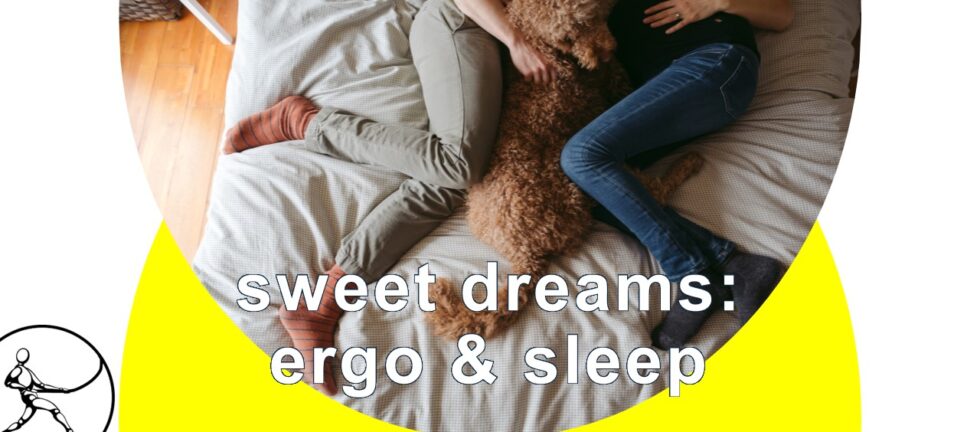At this week’s Applied Ergonomics Conference, Christina Timmons will be talking about how we can use ergonomics to improve our sleep environment. In particular, she’ll talk about pillows, mattresses, and the room you sleep in. Read on for a short summary.
Your pillow
When selecting a pillow, you first need to understand your sleep posture. A side-sleeper needs a very different pillow from a back sleeper. Consider that the pillow’s main job is to fill the space between your head and your mattress, ideally while keeping you in a neutral position. What is neutral? When your head, neck, and spine are aligned, so they’d be in a straight line if I’m facing you, that would be alignment in the frontal plane. When the natural curves in the neck, upper, and lower back are intact, as they would be when you are standing naturally, that would be alignment in the sagittal plane. The goal is to allow spine alignment both ways, in a horizontal position.
A pillow for a side sleeper should be thick, because the head should be lifted to align with the spine. A back sleeper needs a much thinner pillow. For the back sleeper, the pillow simply cushions the noggin. A front sleeper has to rotate the head, so a pillow can cause more awkward neck postures.
Lots of people also use pillows under the bent knees, between the knees, or hugged under the arm, to help keep the spine aligned. Check out this interesting knee pillow for side sleepers available on Amazon Canada, here. (If you give it a try, let us know your thoughts!)
Your mattress
First of all, select a mattress that is large enough to allow you to avoid interference from your bedmates (including Rover). Larger bodies need firmer mattresses, because they compress the springs more.
Is memory foam the answer? It’s at least partially personal preference. Contact pressure always exists between the lowest parts of your body and the mattress – typically heels, pelvis, shoulders, and head for back sleepers, or ankle, knee, hip, ribs, shoulder, and ear for side sleepers.
Memory foam distributes the pressure over a larger area around these contact points, so you’re less likely to feel pressure points. In fact, memory foam is used to prevent pressure sores in hospitals and long-term care homes. However, thick memory foam can make it more difficult to roll over.
The book on Amazon titled The Mattress Maverick: How to choose a mattress that’s right for you by William Frye Sr. goes into more detail explaining the different materials that mattresses can be made out of.
Your bedroom
You’ve probably heard this before, but the best sleep is possible when the bedroom is:
- dark
- quiet
- cool
Christina combed the literature for all of the best sleep tips, and we’re looking forward to hearing her session this week!
Curious about the effects of daylight savings time on sleep? Check out one of our other articles: Daylight savings, sleep loss, and Monday mornings (taylordergo.com)
If you are wondering about training that can provide for your employees, check out our virtual and in-person courses on our website, click here. If you’d like one of our ergonomists to come to talk to your employees about sleep, contact carrie@taylordergo.com.


